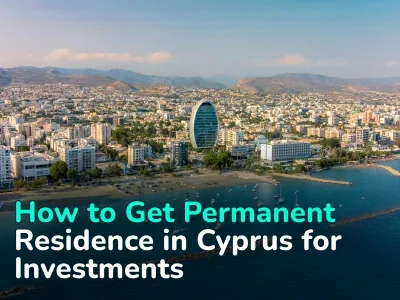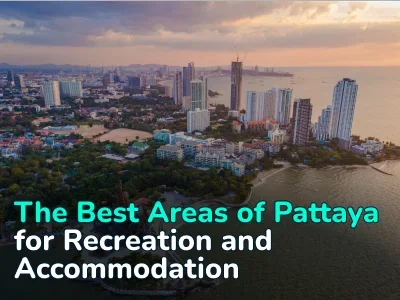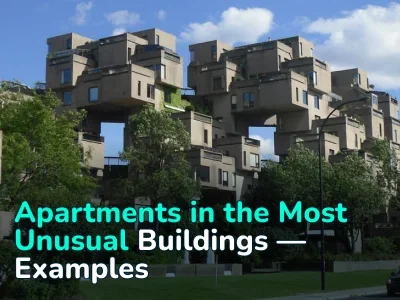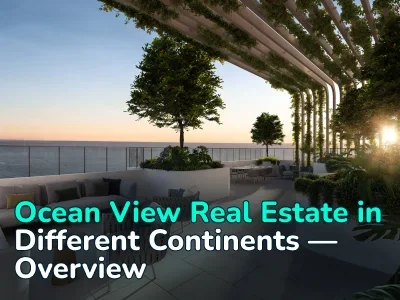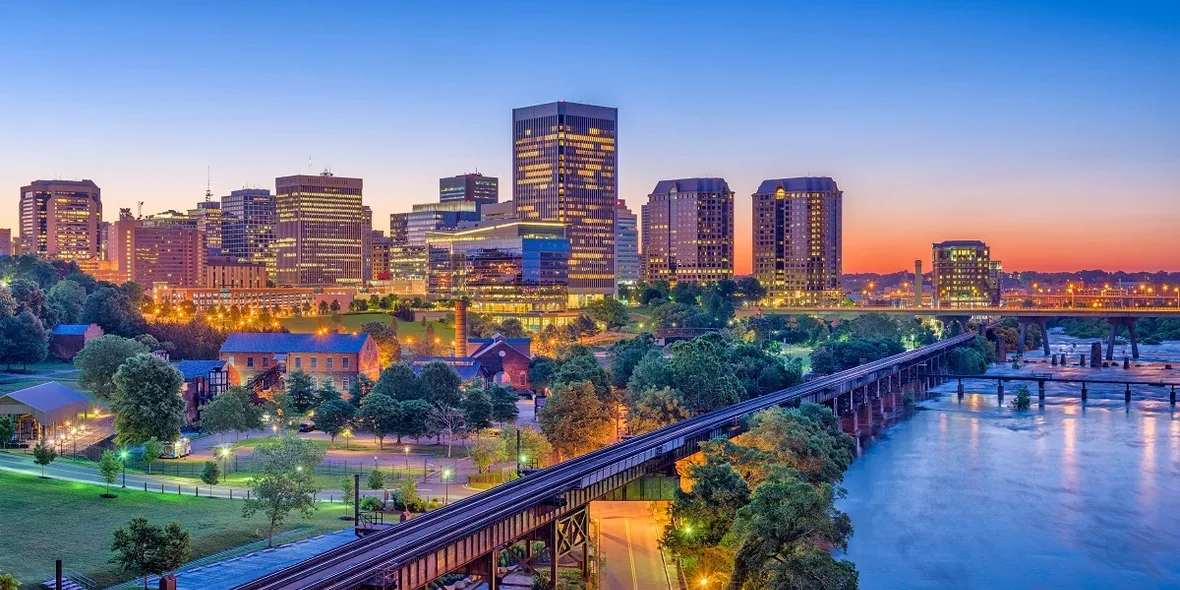
Top Safest Cities in US to Live in
The United States of America attracts investors and migrants from around the world due to its stable economy and vast opportunities within the country. The nation is enormous, ranking third globally in terms of land area, offering diverse landscapes to suit every preference. Moreover, the U.S. encompasses nine distinct climate zones, ranging from the Arctic in Alaska to the tropical climate of Hawaii.
However, such a vast territory is also prone to various weather phenomena, including hurricanes, floods, droughts, and earthquakes. Additionally, the larger the area of a country, the more challenging it becomes to maintain consistent levels of safety across its regions and even individual cities.
In this article, we will explore the primary safety threats faced by residents and attempt to identify what are the safest cities in the United States.
Home & Community Safety
When considering the safest places in the United States, home & community safety is often the first aspect that comes to mind. This category focuses on the elements that directly influence the day-to-day sense of security for residents. It includes measures that protect people within their homes, neighborhoods, and communities, fostering an environment where individuals feel safe and supported.
What defines home safety?
- Crime rates. The most commonly used indicator of community safety is the rate of violent and property crimes. Cities with low incidences of assault, theft, and vandalism tend to offer a higher quality of life. For instance, in 2024, the District of Columbia had the highest American crime rate (1150 violent crimes cases per 100,000 of the population), and Maine had the lowest crime level in America (102 violent crimes cases per 100,000 of the population).
- Police presence. A well-funded and responsive police force can make a significant difference in how safe residents feel. However, this is not the primary criterion. For example, California has the highest number of police officers, yet its crime rate stands at 507 cases per 100,000 of the population, placing the state seventh among those with the highest crime levels in the US.
- Infrastructure. Well-lit streets, maintained parks, and visible surveillance systems ensure safety in America. Moreover, the US has the highest security budget in the world.
- Social cohesion and community programs. The vigilance of citizens, not only toward their own property, often proves to be a crucial factor in ensuring safety in residential areas or suburbs.
- Access to emergency services. Most safest cities in the US have high availability and low response times of emergency services, including fire departments, medical responders, and disaster relief teams.
As of the end of 2024, the safest state is Maine and South Burlington (Vermont) as cities with the lowest crime rate in America. It has the lowest number of crimes per 1000 residents, with a violent crime rate of 0.5 and a property crime rate of 5.1.
In contrast, St. Louis, Missouri, is considered one of America’s most violent cities. It has a high rate of violent crimes, with 18.1 incidents per 1000 people, including 6 murders.
Natural-Disaster Risk
While safety from crime is critical, the risk of natural disasters is another crucial factor when evaluating the safest places in America. The frequency and intensity of natural disasters directly affect the well-being of residents, the safety of their property, and the city’s economy.
What is considered in natural-disaster risk?
1. Hurricanes. Hurricanes are powerful tropical cyclones characterized by strong winds, heavy rains, and storm surges that can cause flooding. The southeastern United States is most vulnerable to hurricanes, particularly Florida, North and South Carolina, Georgia, and the Gulf Coast states (Texas, Louisiana, Mississippi, Alabama).
Hurricanes threat America’s safest cities:
- Billings (Montana).
- Minneapolis (Minnesota).
- Burlington (Vermont).
2. Earthquakes. Earthquakes occur due to the movement of tectonic plates, causing vibrations and fractures in the Earth’s crust. The western U.S., especially California, Alaska, Oregon, and Washington, is the most earthquake-prone region. There is also risk in central states like Missouri and Arkansas.
Earthquakes safest cities in the US:
- Fargo (North Dakota).
- Madison (Wisconsin).
- Des Moines (Iowa).
3. Tornadoes. Tornadoes are powerful wind funnels capable of destroying buildings, vehicles, and forests. The central part of the U.S. (Kansas, Oklahoma, Nebraska, Texas) is so frequently affected that it is known as «Tornado Alley.» A secondary risk zone known as «Dixie Alley» is located in the southeastern U.S., including Mississippi, Alabama, and Georgia.
Tornadoes most safest states in the USA:
- Portland (Oregon).
- Honolulu (Hawaii).
- Seattle (Washington).
4. Flooding. Floods occur due to rising water levels caused by heavy rains, snowmelt, hurricanes, or dam failures. High-risk areas include low-lying regions and cities along major rivers like the Mississippi, Ohio, and Missouri, as well as coastal regions prone to storm surges.
Flooding safest towns in the US:
- Las Vegas (Nevada).
- Salt Lake City (Utah).
- Nashua (Arizona).
5. Wildfires. Wildfires often occur in dry regions, especially during summer and fall. Western states (California, Oregon, Washington, Nevada) and arid areas (Arizona and Colorado) are most frequently affected.
Wildfires safest big cities in the US:
- Portland (Maine).
- Manchester (New Hampshire).
- Providence (Rhode Island).
According to data from the Federal Emergency Management Agency (FEMA), Dayton, Ohio, is considered one of the safest cities to live in the United States regarding natural disasters. While tornadoes and hail pose some risks to Dayton, the city remains relatively secure.
On the other hand, New Orleans, Louisiana, is one of America’s most dangerous cities due to its vulnerability and susceptibility to hurricanes and flooding. Hurricane Katrina in 2005 caused significant damage to the city, flooding approximately 80% of its territory.
Financial Safety
Financial safety is a key component that helps to indicate where the safest place to live in America is. A city with high financial safety provides access to opportunities, supports a high standard of living, and most importantly, maintains a low poverty rate, which is often linked to criminal activity.
What defines financial safety?
- Employment opportunities. Cities with low unemployment rates and diverse job markets are more financially secure. Globally, there is a correlation between rising unemployment and an increase in property crimes. Therefore, cities and states with low unemployment rates (New Hampshire, Minnesota, Vermont) also have the lowest crime rates in America.
- Median income and cost of living. A balance between median household income and cost of living is critical for financial well-being. Cities where residents earn enough to cover housing, healthcare, education, and leisure expenses tend to rank higher in financial safety.
- Housing market stability. Affordable housing with stable property values is a cornerstone of financial safety. A low rate of foreclosures and rental stability indicates a healthy housing market, reducing financial stress for both homeowners and renters.
- Debt and financial stress levels. Cities with lower average credit card debt, personal loan defaults, and payday loan usage signal greater financial health among residents.
The wealthiest states are considered America’s safest places to live from a financial perspective. States like Texas, California, New York, and Florida, with their abundant natural resources and strong industrial base, protect residents of these states from financial shocks. Moreover, financial difficulties are one of the factors contributing to an increase in crime.
What are the Safest Cities in the United States
When assessing the safety of U.S. cities, data from FBI reports, local law enforcement agencies, and independent studies are taken into account. However, it is important to note that not all reports are publicly available, and the data may vary depending on the organization.
List of safest cities in the US:
|
Rank |
City |
State |
Violent Crime Rate (per 1000) |
Property Crime Rate (per 1000) |
|
1 |
South Burlington |
Vermont |
0.5 |
5.1 |
|
2 |
Columbia |
Maryland |
0.6 |
6.2 |
|
3 |
Nashua |
New Hampshire |
0.8 |
8.3 |
|
4 |
Yonkers |
New York |
0.9 |
7.0 |
|
5 |
Madison |
Wisconsin |
1.0 |
9.1 |
|
6 |
Portland |
Maine |
1.1 |
9.5 |
|
7 |
Warwick |
Rhode Island |
1.2 |
10.2 |
|
8 |
Irvine |
California |
0.7 |
11.1 |
|
9 |
Thousand Oaks |
California |
1.3 |
10.8 |
|
10 |
Boise |
Idaho |
1.4 |
12.5 |
|
11 |
Gilbert |
Arizona |
1.5 |
13.1 |
|
12 |
Burlington |
Vermont |
1.2 |
11.9 |
|
13 |
Scottsdale |
Arizona |
1.6 |
14.0 |
|
14 |
Virginia Beach |
Virginia |
1.7 |
13.3 |
|
15 |
Glendale |
California |
1.8 |
14.2 |
|
16 |
Plano |
Texas |
1.9 |
15.1 |
|
17 |
Raleigh |
North Carolina |
1.8 |
14.7 |
|
18 |
Honolulu |
Hawaii |
2.0 |
16.0 |
|
19 |
Durham |
North Carolina |
1.9 |
15.5 |
|
20 |
Chandler |
Arizona |
1.7 |
13.8 |
1. South Burlington, Vermont
South Burlington is recognized as the safest city in the United States due to its low crime rate. The city’s economy is largely service-based, with 34.2% of its population employed in education, healthcare, and social assistance. Thanks to its location in the northeastern United States, South Burlington faces minimal natural disaster risks, with occasional severe snowstorms and winter storms being the primary concerns.
2. Columbia, Maryland
Columbia is a planned community completed in 1967. Its design prioritized safety, which is why it ranks second on the list. Columbia faces moderate risks of flooding and thunderstorms, particularly during periods of heavy rainfall.
3. Nashua, New Hampshire
Nashua, the second-largest city in New Hampshire, boasts an economy driven by technology, healthcare, and finance. It is largely free of natural disasters, with only occasional flooding along the Merrimack River and snowstorms during winter posing potential risks.
4. Yonkers, New York
Yonkers, the largest city in Westchester County, is located near New York City. While the city faces moderate flood risks due to its proximity to the Hudson River, its infrastructure is well-equipped to handle such situations effectively.
5. Madison, Wisconsin
Madison, the capital of Wisconsin, is home to the University of Wisconsin-Madison, making it a hub for education and culture. Although winter blizzards and heavy snowfalls are common, the city’s infrastructure is well-prepared to manage such weather events.
6. Portland, Maine
Portland, the largest city in Maine, is known for its historic port and high-quality seafood. Its economy is primarily driven by tourism, fishing, and healthcare. The city faces minimal natural disaster risks, with occasional strong winter storms and rare coastal flooding being the main concerns.
7. Warwick, Rhode Island
Warwick is the second-largest city in Rhode Island, famous for its coastal resorts. Its location makes it vulnerable to hurricanes and storms, particularly during hurricane season.
8. Irvine, California
Irvine is a major hub for technology and education. The primary natural risk in Irvine is earthquakes, which are common in Southern California, but strict building codes and warning systems help mitigate potential damage.
9. Thousand Oaks, California
Thousand Oaks, located in the Los Angeles area, is known for its abundant trees, parks, and open spaces. However, the dry climate and dense vegetation increase the risk of wildfires, which are a major concern for the city.
10. Boise, Idaho
Boise has a low risk of natural disasters. Rare wildfires in dry periods typically remain confined to the city’s outskirts. While Boise seldom experiences significant natural catastrophes, its crime rate is slightly higher than other cities in the top ten.
11. Gilbert, Arizona
Gilbert actively develops community programs and initiatives to maintain safety, making it one of Arizona’s safest cities. However, the city faces risks of drought and occasional dust storms, which are typical for the region. Water supply remains a key challenge for the city.
12. Burlington, Vermont
Located on the eastern shore of Lake Champlain, Burlington is Vermont’s largest cultural hub. The city is shielded from major natural disasters, with only rare flooding following particularly snowy winters.
13. Scottsdale, Arizona
Scottsdale focuses on tourism and generates significant income from it, prompting local authorities to prioritize safety. The city faces risks from droughts and dust storms, which are common in desert regions.
14. Virginia Beach, Virginia
Virginia Beach is a major coastal city on the eastern seaboard of the United States. Its primary natural risks include hurricanes and coastal flooding, but local authorities actively invest in strengthening the shoreline and early warning systems.
15. Glendale, California
Glendale’s economy is rooted in the entertainment industry and retail trade. The main natural risks include earthquakes and wildfires, which are common for the region.
16. Plano, Texas
Plano stands out for its low crime rate and high household incomes. The city faces moderate risks of tornadoes and severe thunderstorms typical for Central Texas, but authorities are proactive in developing alert systems and shelters.
17. Raleigh, North Carolina
Raleigh, one of North Carolina’s largest cities, is part of the «Research Triangle.» The city is at risk of hurricanes, particularly during storm season.
18. Honolulu, Hawaii
Honolulu is the largest city in Hawaii. Its main natural risks include tsunamis, hurricanes, and volcanic activity.
19. Durham, North Carolina
Durham faces moderate risks from hurricanes and severe thunderstorms. However, the city’s emergency services are well-prepared to respond to these threats.
20. Chandler, Arizona
Chandler is a high-tech city in the suburbs of Phoenix, with an economy focused on innovation. Droughts and dust storms remain its primary natural threats, but sustainable urban planning helps mitigate their impact.
Author
I write informative articles about real estate, investments, job opportunities, taxes, etc.














